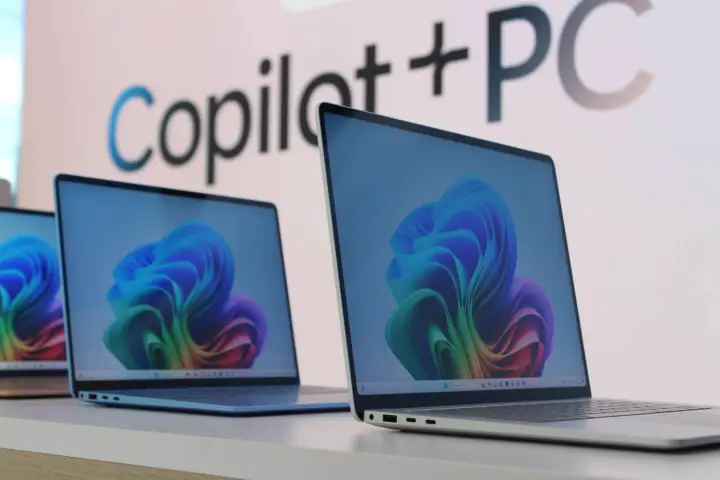We all expect the latest and greatest tech to be faster, thinner, and smarter — but we should also expect it to be more efficient and sustainable over the long term. We have a long way to go, but when it comes to the world of laptops and PCs, we’re definitely making some progress.
As part of our ongoing Tech for Change series, we want to shine a spotlight on positive uses of technology, and showcase how they’re helping to make the world a better place. And even as the mountains of e-waste pile up around the world, I’ve found reasons to be hopeful thanks to the following five trends in the PC space.
Experiments in modularity and repairability
We’ve all witnessed the trend of laptops coming with more and more of the components soldered to the motherboard. It happened most recently with this year’s Dell XPS and ROG Zephyrus laptops — making RAM much more difficult to repair and upgrade. On the surface, it doesn’t feel like we’re moving in the right direction.
At the same time, though, we’re seeing new technology that moves toward more repairability. Concept Luna is the best example so far. This is Dell’s attempt at pursuing circular design, meaning a way of manufacturing products that can be easily repaired, refurbished, and recycled. That means laptops can be completely disassembled without tools within minutes, whether by a person or by a machine — without a single screw. Standing in sharp contrast to the way laptops are made today, the result is laptops where nearly every component is reusable or recyclable. Concept Luna hasn’t exactly taken off yet in reality, but Dell claims it’s hoping for a “seismic shift” in the way laptops are manufactured and designed.
Interestingly, there’s a company making laptops today that has embraced that type of approach: Framework. There are two models out there right now, the 13-inch and 16-inch. These are modular laptops that allow you to easily go in and replace parts, including the entire motherboard and CPU so you can upgrade without having to toss your entire machine.
It feels like we’re still at the beginning of this movement, but companies like Framework are showing that it’s at least possible.
Recycled aluminum and other materials are now widely being used

The dream of an ecosystem of fully modular laptops might feel like an ideal that we’ll never reach, but when it comes to the materials that laptops are made out of, we’ve made some progress over the years.
Apple was ahead of the game here, beginning to use 100% recycled aluminum in the MacBook Air back in 2018. But long gone are the days when Windows laptops were known for using a cheap plastic chassis. The entire industry has since followed suit in moving to aluminum and pursuing other recycled materials, whether that’s Lenovo, Dell, or HP. In fact, HP says that 100% of its PCs and monitors since 2022 have some amount of recycled materials used.
As an example of how much things have changed, one of my favorite premium commercial laptops, the HP Elite Dragonfly, has gone from 0% recycled materials in the enclosure and hinge when the device came out in 2019 up to 90% recycled magnesium in the chassis in last year’s model. The laptop is now using 55% post-consumer recycled plastic in the speaker enclosure, which even includes 5% ocean-bound plastic. In other words, we’ve gone from an industry that uses almost no recycled materials to that becoming the industry standard.
All of this is a pretty big deal and does have an effect, and according to Apple, using the 100% recycled aluminum on its 16-inch MacBook Pro reduces emissions by about 26%.
Now, using more recycled materials in other parts of the laptop is where things get much more difficult. For example, that same 16-inch MacBook Pro is only using a total of 36% recycled or renewable materials right now, so there’s a long way to go. But again, progress is being made. Just last year, Apple committed to using 100% recycled cobalt in batteries by 2025, and many of these companies have some aggressive 2030 sustainability goals that they are inching their way toward.
New grading standards for desktop PCs

Next, let’s turn our attention to desktops, and the industry’s attempt to make them a bit more green. Intel kickstarted an initiative in China earlier this year when it showed off the first “green PC,” which is made up of 90% recycled materials — an impressive feat, especially when it involves working with all of its hardware partners.
But this first showing was only the beginning, because Intel has now launched an entire Green PC grading standard with its OEM partners, including Bronze, Silver, and Gold ratings that evaluate things like Design Definition, Production Delivery, Recyclability, and more.
This is just happening in China to start off, but the idea is to encourage system builders and component makers to find ways to use more recyclable materials and reduce emissions throughout the production process. For example, according to a report from Tom’s Hardware, the initial green PC that was showed off had a motherboard with fewer components, down from 1,800 to 1,400, resulting in 22% less materials being used.
Intel is encouraging PC makers to be more sustainable, and hopefully we see this Green PC grading come to the U.S. Not only would it push system builders and OEMs to embrace more sustainable practices and materials but it would also give PC buyers better visibility on what they’re buying. Having a badge right on the marketing materials that would let buyers choose would go a long way toward boosting sustainability — and hopefully that’s already in the works.
Better efficiency and longer batteries

Improved laptop efficiency is a win-win situation. It’s one of the few areas where improved sustainability also makes for a better overall product, regardless of the positive environmental impact. And it just so happens that we are in the middle of a bit of an efficiency revolution in the transition to Arm processors.
Apple has obviously made its big transition to Apple Silicon Arm chips, and Windows devices are now doing the same with Copilot+ PCs. There have been previous attempts to truly embrace Arm chips on Windows, but until now, the chips just didn’t have the performance to back it up. But with Qualcomm’s new Snapdragon X chips, it finally feels like there’s a worthy trade-off — especially since some apps will still need to run in emulation.
The major benefit, of course, is that Arm chips are extremely efficient, resulting in less power needed to produce the same amount of performance, which is often measured as performance per watt. It also means more time away from the outlet, thanks to how much less power is being pulled out of the battery over the hours. Doubling the battery life of a laptop might not sound like it would make that big of a difference in the grand scheme of things, but if you imagine this on a large scale, you see where the power savings come in.
Even with Microsoft’s push behind its Copilot+ PCs that use Arm, however, adoption isn’t going to happen overnight. And yet, hopefully we can look back in a couple of years and see that we’re all using laptops that are better in every way — and as it turns out, end up being better for the environment too.
Packaging

Lastly, let’s talk about packaging. It might not feel like the most pressing topic, but when the issue of sustainability first reared its head in the tech industry, it’s the first thing many manufacturers were able to change almost immediately.
We all remember the days of tech products coming in glossy plastic, covered in stickers and slick materials. As fun as all that was, there’s been a concerted effort to try to reduce the amount of disposable materials that come when you buy a new laptop or PC. As a reviewer, I experience this all time, and I’ve been able to witness the evolution toward less packaging as a whole, with much more of it being recyclable.
Turning back to Apple again here, 100% of the packaging in laptops like the MacBook Pro 14-inch is fiber-based, which include both recycled content and natural fibers. Fiber packaging also uses less energy to produce as a whole compared to plastic. In the case of the MacBook Pro, 45% of that fiber packaging is recycled content, and Apple even says that 100% of the virgin wood fiber comes from “responsibly managed forests.”
Similarly, Lenovo has also been aiming to eliminate plastic from packaging entirely, and its flagship ThinkPad laptops, the X1 and Z series, have come the furthest along, using bamboo fiber and other materials to create completely plastic-free packaging on these laptops, resulting in 192 fewer metric tons of plastic used, according to Lenovo.
You’ll notice that it’s the premium products that get the more sustainable packaging, of course, while more budget products tend to still rely on basic plastic materials. We haven’t quite arrived yet, but again, a lot of progress has been made in this regard.
Despite the huge problem that e-waste is, there are reasons to be optimistic about where we’re headed in the future.
Editors’ Recommendations







